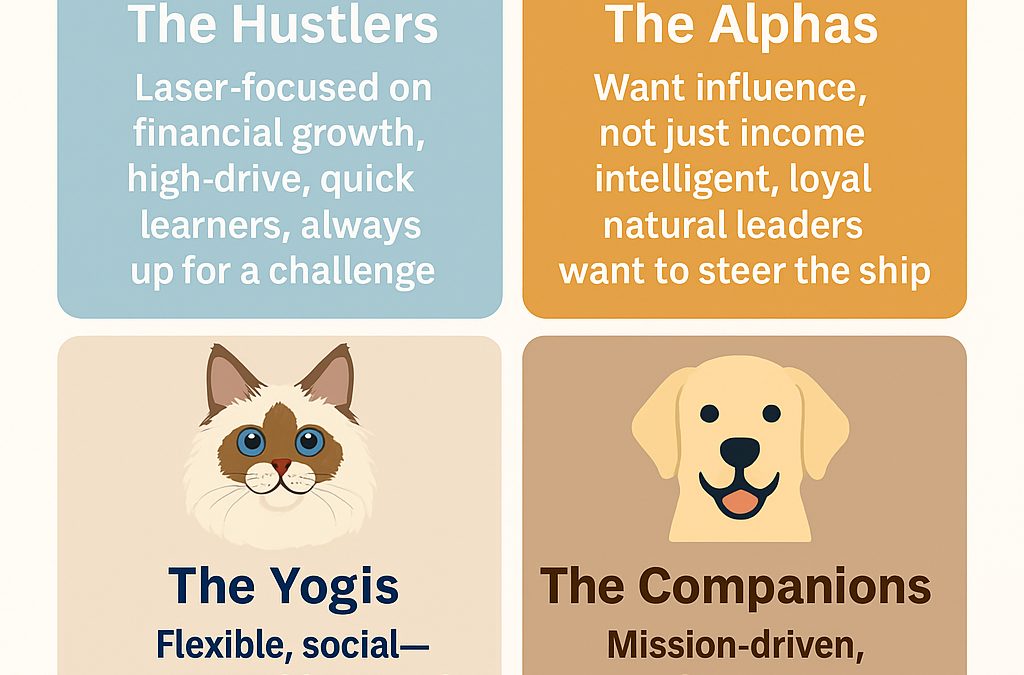Hiring a veterinarian right now is no small feat. It’s time-consuming, expensive, and emotionally draining for most practices. You’re lucky to get an application in under a month, let alone find someone who’s not just qualified but also aligned with your clinic’s values. And even when you do find that unicorn candidate, retention still feels like a gamble.
I say that not as an HR pro or recruiter—but as a veterinarian who has sat on both sides of the interview table. I believe, more than ever, our hiring and retention issues aren’t merely about pay; they are about misinterpreting what type of vets we are hiring—and what type of vets we are.
Meet the “Breeds”: Understanding What Drives a Veterinarian
Over time, I’ve come to think of us (DVMs) in terms of “breeds.” I know calling us “breeds” might raise eyebrows, but stick with me. Not to diminish the individuality of any one person, but as a lens to understand different career impulses, energy levels, and motivators.
We tailor medicine and communication styles for the personality and needs of our patients every single day. Why wouldn’t we do the same for our people? In my mind, the vet breeds break down something like this:
The Hustlers – Laser-focused on financial growth. Hustlers want to work, produce, build revenue, and see those numbers climb. These are the Border Collies of the profession—high-drive, quick learners, always chasing the next challenge.
The Alphas – Alphas want influence, not just income. The German Shepherds—intelligent, loyal, natural leaders that are often protective of our teams and hungry to shape the direction of the practice. They don’t just want to practice medicine; they want to steer the ship.
The Yogis – Flexible, social, very capable—but needs strong boundaries to avoid burnout. These doctors value balance, connection, and team harmony. These are the Ragdolls, deeply loyal, emotionally tuned-in, and thrive in peaceful, predictable environments.
The Companions – Mission-driven, need autonomy. Rooted in purpose, they are often cause-driven, creative, and drawn to practices where values matter as much as volume. Like a Labrador, they’re willing to go the extra mile as long as the “why” is aligned with their personal and professional beliefs.
These breeds aren’t rigid categories; most of us cross over and have characteristics of several. However, in my experience, both as a DVM and someone involved in hiring and leadership, not understanding a doctor’s core driver is one of the biggest missed opportunities in Veterinary recruitment and retention today.
The ‘Why’ Always Matters More Than the ‘What’
Across the industry, there has been a lot of talk about how to structure compensation, what the right salary is, whether bonuses work, how to offer equity, and how to measure production. And don’t get me wrong, those things matter and can be the key to finally signing a doctor to a practice that needs them desperately.
That said, I’ve met veterinarians who left high-paying roles because they felt like a cog in the machine. I’ve also seen doctors stick around in lower-paying jobs because the team felt like family, the leadership actually listened, and their personal goals were respected.
The question underneath all of this should not be, “What should we offer?”
It needs to be, “Why would this person want to work here in the first place?”
Is it to grow their career? To build stability for their family? To pursue a specific kind of medicine? Or maybe because the practice shares their values and they want to make a difference? If we don’t know and we don’t bother to ask, we’re just tossing benefits into the wind and hoping something sticks and in an environment where nearly 30% of Veterinary professionals are considering leaving their roles within the next year, that’s not a risk any of us can afford to take [1].
We’re Not Just Hiring a Doctor—We’re Showing our True Colors
One of the most overlooked truths in hiring is that every offer reflects your values. If we lead with compensation and nothing else, we’re signaling that money is what matters most here. If we prioritize culture, mentorship, autonomy, or flexibility, we’re telling a different story.
That doesn’t mean there’s a right or wrong answer. Some practices are built for the Border Collies; others for the Ragdolls. However, when we try to build something that works for everyone, we end up creating an environment that doesn’t quite work for anyone.
Especially now, with non-competes fading [2], relief work expanding [3], and DVMs gaining more mobility than ever, what your organization offers has to be more than transactional. It has to be intentional.
Final Thoughts
In today’s compensation arms race, it’s easy to assume that money is the fix. And to be fair, it’s moved us in the right direction, DVM salaries are beginning to reflect the real value we bring to pets, clients, and practices. However, pay alone won’t always build a team that stays.
Retention is about seeing your people, not just paying them. Hiring works best when you know what kind of veterinarian your practice truly needs and you’re honest about who you are in return. When we lead with that kind of intention and care, we don’t just find great doctors, we help them grow, thrive, and stick around.
Simply put, when a vet finds the right fit, everyone wins: the team, the patients, the practice, and the profession.
REFERENCES:
[1] AAHA. “Stay, Please: Phase I and II.” 2023.
[2] FTC. “Final Rule on Non-Compete Clauses.” April 2024.
[3] FlexVet Staffing. “Relief Veterinarian Jobs: What’s Ahead in 2025.” Retrieved June 2025.
[4] AVMA. “Veterinary Staff Salary Trends.” 2024.
[5] Ward & Uptigrove. “DVM Compensation Trends.” 2024.

